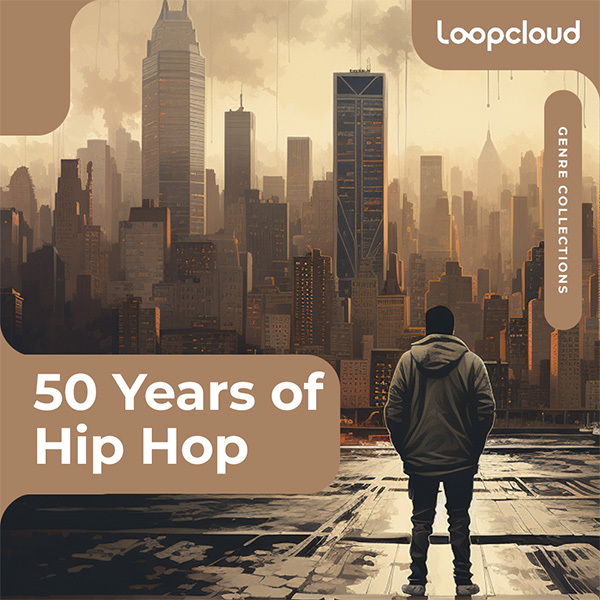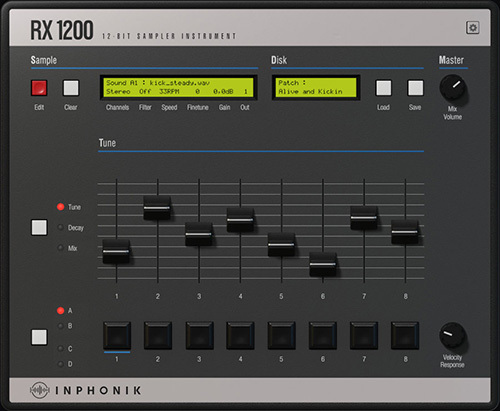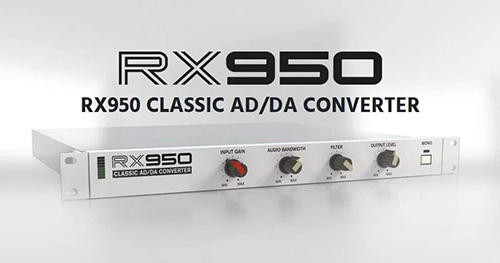Blog
50 Years Of Hip Hop – Decade by Decade
21 Aug '2023
Look back at five decades of the beloved genre – and the technology that made it possible.

Celebrating 50 years of Hip Hop comes with a world of stories, innovation and evolution. To honour the occasion, we‘ve released a special ‘50 years of Hip Hop’ Loopcloud Collection touching on each decade’s profound influence.
From its gritty origins to modern innovation, our collection captures the diverse journey of hip-hop. Through big beats, melodic loops and vocal snippets, we honour the many pioneers, game-changers and cultural players who shaped the genre.
In this article, we look back at the history of Hip Hop, highlighting several major moments throughout its 50 years.
The 70s
The start of Hip Hop dates back to Aug. 11, 1973, when DJ Kool Herc created continuous breakbeats by working two turntables and a mixer during a party at 1520 Sedgwick Ave in the Bronx. Two copies of the same record were used to extend drum breaks, whilst the DJ and his homies jumped on the mic.
The young Jamaican-born New Yorker’s improvisation ignited the movement of repeated breaks. His techniques came to be known as scratching and rapping, laying the foundations for the culture of Hip Hop we see today.
House parties led to block parties, boomboxes flooded the streets and rhyming exploded. Back then, there was no recorded version of Hip Hop, the only way to contribute was to get involved!
Within a few years, culture was booming. Cassette tapes began to circulate the city, seeping into wider circles before eventually reaching the radio. In 1979, The Sugarhill Gang released ‘Rappers Delight’, one of the first records to hit the shelves and stamp the rhythm and rhyme movement into the minds of the masses.
Technology was just getting started during this era. Interestingly, when the first turntable debuted for commercial use, its expensive price tag was inaccessible to most DJs and producers, particularly those from the margins of Hip Hop. Although, during the 1977 blackout in New York, huge amounts of DJ equipment were looted from stores and accessibility flourished.
A pair of turntables and a bunch of vinyl records is where the magic happened. DJs revelled in the hands-on nature of turntablism, creating a brand new expression as artists developed their own styles from the tactile handling of the equipment.
Records could now be mashed together, split in half, reversed, you name it. Simply by adjusting the speed and duration of each track, Hip Hop was reaching new heights and the realms of turntablism is something that is still evolving to this day.
The 80s
As Hip Hop evolved, millions of young Americans began to form an identity, expressing themselves and their politics through music. Naturally, the multicultural boom began to reflect the economic conditions of inner-city life, and Hip Hop could be heard in LA, Toronto, New Orleans and beyond.
Speaking the truth became central to the whole thing, marking important social commentary records such as 1982’s ‘The Message’ from Grandmaster Flash: ‘It’s like a jungle sometimes, it makes me wonder how I keep from goin’ under’...
Lyrics became an outlet for the tales of the streets. Reporting on experiences of the city through poetry and rhyme, Hip Hop moved closer to marginalised communities and resistance in America. 1989 saw a huge milestone for the genre as the Grammys introduced a new category - Best Rap Performance.
It’s impossible to talk about the 80s without mentioning the introduction of the legendary Roland TR-808. The backbone of Hip Hop beats, the machine that changed everything.
When the 808 was introduced in 1980, there were already a few drum machines already out there, but this was the first where you could actually programme your own drum patterns. The Roland TR-808 Rhythm Composer, as it was first known, followed a similar path to the turntables. Initially, the 808 was hideously expensive and the futuristic, machine-made sounds were not best received by the audience at the time.
Fast forward a couple of years, 808s are sat in pawn shops for pennies and the young people of the streets swoop in to make history. By 1982, the 808 had featured in huge tracks like Marvin Gaye’s ‘Sexual Healing’ and Whitney Houston’s ‘I Wanna Dance With Somebody’, whilst supplying Hip Hop with the biggest beats the genre had ever heard.
Get that legendary Grit and Crunch
The back end of the 80s is all about sampling. E-mu Systems released the SP-1200 sampler in 1987, coining the widely considered ‘original Hip Hop sampler’ that perfected the gritty, analogue vibe many favoured in the Hip Hop circles.
Arriving at an affordable price, the SP-1200 offered full sampling and sequencing control allowing producers to create entire tracks in one machine which is still used today. Inphonik’s RX 1200 is one way to get its sound in your DAW today, reproducing the sampler’s signature sound with the ease of modern technology. With its gritty digital sound for sequencing fat beats, the ability to build musical phrases with 32 sample slots, and its warm filters for efficiently capturing bass lines from vinyl, the SP-1200 is a monument to beat-making that gave music producers huge new possibilities.
Get 20% off Inphonik’s RX 1200 with this coupon: nkfjnndo Valid from 1st September 00:00 BST until 30th September 23:59 BST
The Akai S950 released in 1988, one of the most famous samplers from the 80s, is largely praised for its legendary sound. Many consider the 12-bit grit and crunch still unmatched today. But the 12-bit resolution is not all. For over a year, Inphonik studied every bit of this studio gear masterpiece to bring back its unique character to your modern DAW with the RX950. The RX950 Classic AD/DA Converter, Inphonik's first effect plug-in, was designed to perfectly mimic the whole AD/DA conversion process of the Akai S950 in order to give your music this vintage, warm and crunchy sound with the ease & flexibility of a VST.
Get 50% off Inphonik's RX 950 with this coupon: gbotmfst Valid from 1st September 00:00 BST until 30th September 23:59 BST
In the same year 1988, Akai released the MPC 60. Where to start with the MPC? The GOAT of samplers, it’s fair to say a multitude of styles and sub-genres came from Akai’s creation in 1988. The OG MPCs remain a strongly sought-after item today for their heavenly hands-on workflow, retailing for way over their original price in second-hand stores.
The 90s
Diversity poured into Hip Hop in the nineties. A Tribe Called Quest sought inspiration from jazz, taking sampling to a whole new level and toeing the line between playful party lyrics and meaningful modern struggles.
Popularity was booming with artists entering the mainstream and shows growing in size. Samples also expanded into new worlds such as film and rock music, working clever timing and carefree arrangements into a new age of Hip Hop. For example, De La Soul’s work borrowed from the likes of Steely Dan…
This extension of sampling goes hand in hand with technology’s development. The decade welcomed new, cheaper versions of samplers, cassette distribution was rife and access to sampling material was better than ever.
Then came the big C. Cubase launched the very first edition of their software in 1989, before fully releasing the Apple computer-friendly version at the turn of the decade. Artists could now plug into a computer, pull up their samples and produce at their fingertips.
The 90s also witnessed a rise in conscious rhyme. Artists like Nas and Mos Def delivered timeless albums delving into the hustle of poverty-struck upbringings and celebrating black history.
Conscious rap grew in popularity and acclaim, honouring the genre’s maturity and steering themes back towards resistance, encouraging people to ask questions about the world.
The 2000s
Bling-bling, brap! Hip Hop experienced a materialistic dip, like most waves that witness such a boom. As we enter the 2000s, artists like Lil Wayne and 50 Cent enter the mix, bringing in popular singers like Mariah Carey and Jennifer Lopez, beefing up beats and steering away from the conscious theme of the 90s.
This era welcomed a time of huge commercial success with many artists topping the charts and starting to embrace the internet. Alternative forms of listening and streaming saw immense growth, resulting in somewhat of an end to Hip Hop’s physical charm.
With the internet came peer-to-peer file sharing and the decline of buying music. Record labels jumped on this shift, restructuring the traditional record deal and encouraging artists to give full control over their music in order to optimise sales.
Despite the decline of vinyl, cassettes and the tangible pleasures of Hip Hop history, producing the music became more accessible than ever. Artists could now share and even sell their beats online, exposing Hip Hop to the rest of the world and nurturing virtual fan communities.
The early 2000s also witnessed the start of mass access to digital audio workstations like Ableton (2001) and Logic Pro 6 (2004). This was the real start of the bedroom producer. Young people that had always been the beating heart of Hip Hop could now take back control and make music on their own terms.
There are more bedroom producers today than ever, and thanks to affordable plug-ins like the new ‘Beat Machine 2’, folks have access to decades of drum machines for a fraction of the price. The collection from DopeSONIX, available at Plugin Boutique, covers three decades of Hip Hop drum, with over 600 kits for you to dive into.
The 2010s
Moving into the last ten years, Hip Hop has seen a rollercoaster of emotions. Questions were asked if the genre was dying after the decline of sales in the early 2000s, little did we know another boom was just around the corner.
The genre took on a new political meaning in the wake of the Black Lives Matter movement in 2013 after Trayvon Martin’s killer was acquitted. Artists like J. Cole and Kendrick Lamar spoke vividly about issues of racism, violence and inequality that Hip Hop has always been a voice for.
In 2017, Hip Hop surpassed Rock as America’s most-streamed genre for the first time. Decades after its birth, Hip Hop has evolved from its origins in the Bronx to one of the most popular genres on the planet.
Technology is also experiencing a golden era. With more access to information and tools than ever, the production of music has never been more accessible. The rise of platforms like Bandcamp encourages artists down the DIY route, without the need for a big label to reach their audiences.
Similarly, with social media, artists have a link to their fans which has created a direct relationship for both interaction and sales. Merchandising has become central to many artists’ promotion, selling t-shirts and records straight to their fans.
The future
Hip Hop is showing no signs of slowing down. Sample packs are on another level, new music is flowing and appetites are strong. New genres are popping up all the time, take trap and grime, two groundbreaking genres that were born as a result of Hip Hop.
Check out the recent Loopcloud DRUM Expansion: Hip-Hop and Trap Flow, with over 800 kits straight from the mouth of five decades in the game. Here’s to the next 50 years of Hip Hop.
FAQs
Why is hip hop 50 years old?
Hip hop celebrates turning 50 in 2023 as it is 50 years since Clive Campbell (known as DJ Kool Herc) played breaks from two turntables at a party in The Bronx NYC on August 11 1973.
Since then the genre of hip hop has evolved throughout with several distinct eras and now, in 2023 countless sub genres.
It is arguably the most popular genre in the world and has inarguably crossed the boundary into popular culture in an unprecedented way.
When was the 50 years of hip hop?
The 50th anniversary of hip hop occurred on August 11th 2023.
What is considered the golden age of hip hop?
The golden age of hip hop occurred between 1988 and 1995. In this time hip hop was becoming a mainstream genre, however it was still being created an released by independent artists an labels.
This allowed artists to write an produce with a huge amount of creative freedom as they were unconstrained by the pressures and expectations of major record labels.
What years was hip-hop most popular?
Though hip hop became mainstream in the 1990s, it has become more and more popular since then. Therefore it is safe to say that hip hop is most popular now in the 2020s and will prpbably continue to grow in popularity throughout the coming decades.






